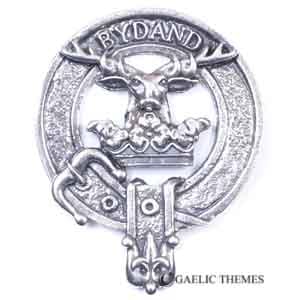Gordon
Select
- Design: Standard
- Clan Motto: Bydand (Remaining)
- Known Septs Include: ADAM, ADAMS, ADAMSON, ADDIE, ADDISON, ADIE, AIKEN, AIKINS, AITCHISON, AITKEN, AKIN, ATKEN, ATKIN, ATKINS, ATKINSON, BADENOCK, BARRIE, BOYNE, CONNON, CONNOR, CRAIG, CROMB, CROMBIE, CULLEN, CULANE, DARG, DARGE, DORWALD, DORWARD, DUFF, DURWARD, EADIE, EDDIE, EDIE, EDISON, ESSLEMONT, GARDINER, GARDNER, GARIOCH, GARRICK, GARRIOCK, GEDDES, GERRIE, GRANT, HUNTLEY, HUNTLY, JESSIMAN, JOPP, JUPP, LAING, LANG, LAURIE, LAWRIE, LENG, LING, LOWRY, MACADAM, MALLETT, MANTEACH, MAR, MARR, MAVER, MAVOR, MELDRUM, MILINE, MILL, MILLES, MILLS, MILN, MILNE, MILNER, MILNES, MOIR, MOORE, MORE, MORRICE, MORRIS, MUIR, MYLNE, STEEL, STEELE, TEAL, TEALL, TOD, TODD, TOUGH, TROUP
- Notes:
Crest: Issuant from a crest coronet Or, a stag’s head (affrontee) Proper attired with ten tines Or
Centred in the north-east of Scotland, the Gordons are a powerful family of Anglo-Norman descent. The boar’s heads on their arms recall a tale wherein one member saved the king from a wild boar.
The first reliable reference to the name appears in the Borders during the reigns of Malcolm IV and William the Lion. Richard de Gordon appears in charters from the period and probably died around 1200. In 1305, Sir Adam de Gordon was a warden of the marches and served as one of the commissioners seeking settlement from Edward I regarding competition over the crown of Scotland. Adam was a supporter of Robert the Bruce and was one of the envoys sent to ask the Pope to lift Bruce’s excommunication for the murder of John Comyn. For his service, Adam was granted the lands of Strathbogie.
The castle at Strathbogie was renamed Huntly after a portion of Gordon lands in Berwickshire. In 1436, Sir Alexander Gordon was made Lord Gordon and his son was raised to the title of Earl of Huntley. The castle was later burned by allies of the Douglases who were revolting against the king (whom the Gordons supported). However, this was replaced by a new grand castle.
George, fourth Earl of Huntley, became Chancellor of Scotland in 1547 and was a close confidant of the mother of Mary, Queen of Scots. The Gordons were Catholic, but did not always get along with Catholic monarchs. Huntly in fact was killed in the battle of Corriche fighting the queen’s army. His son John was beheaded by the queen at Aberdeen.
The second Marquess of Huntley supported the Royalists in the Civil War and his unit “the Gordon Horse” became legendary for fighting with the Marquess of Montrose. Sadly, Huntley and Montrose did not get on well, and their friction impacted the Royalist side’s success. Huntley was captured and 1647 and beheaded in 1649. In 1651, Lord Louis Gordon was restored the family estates and raised to the rank of Duke of Gordon in 1684.
The Gordons fought on both sides of the uprisings of 1715 and 1745. The second Duke followed the ‘Old Pretender’ in 1715, surrendered and was imprisoned briefly. The third Duke fought for the Hanoverian crown in the ‘45. At the same time, his brother Lord Louis Gordon, raised a Jacobite regiment and escaped to France after Culloden. The fourth duke served as a general and governor of Edinburgh castle. He died childless, so the marquessate passed to a kinsman from whom the present chief is descended.
Another Gordon branch were created Earls of Aberdeen in 1682. The fourth earl was a Prime Minister in the mid-1800s. Advanced to the rank of Marquess, this branch’s seat is at Haddo in Aberdeen.
Even today, Gordon chiefs are often called the “Cock o’ the North” in reference to their near-regal demeanor, pride and prowess.
